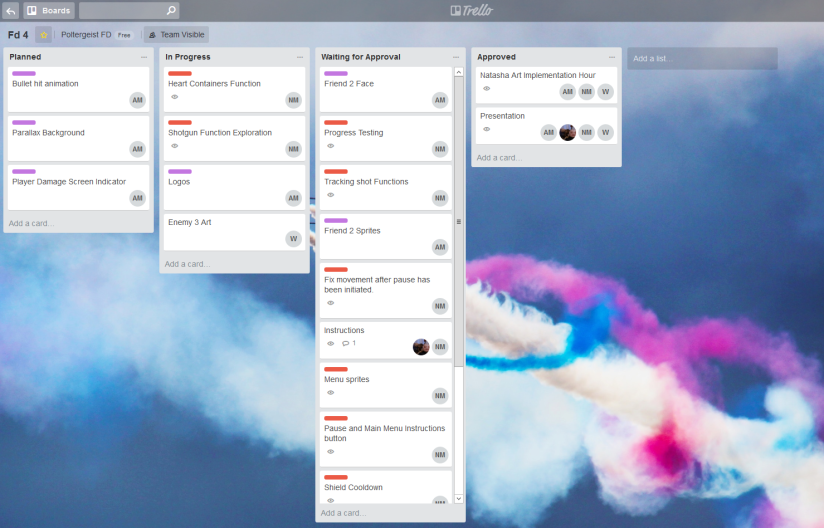Today, I am going to explain how working with Scrum in its agile state has benefitted me as a programmer and as a game designer.
As a programmer I have picked up a terrible habit, I tend to focus on multiple things at the same time and when one of my assets isn’t working I start or carry on working on a different asset. Therefore, at the end of the day I have lots of half finished or half started assets with a disorganised project and I believe my brain’s excellent memory is my saving grace every time. Agile Scrum helps me focus on more specialised assets per week, so that I don’t work on something that is not necessary to complete at this stage of the development process. This is done by agile Scrum following its strict ritual of having what’s called Sprint Plans, with Sprint stand-up meetings everyday and Sprint reviews at the end of every Sprint plan. This helps me focus on specialised assets because in every sprint plan I am given assets to have completed by the Sprint review. Therefore, I can avoid working on something that isn’t for this stage of development.
My group uses Trello for Sprint planning, a website or app that allows for specialised group boards with specialised tabs, it also allows us to colour code and tag everyone’s specific assets so that we know who is working on what for this week. For example, I am tagged as NM with the colour code of Red for programming and Ana Laura Martinez, my lead artist, is tagged as AM with the colour code of purple for Art/Graphics.

Now that I am finished discussing how agile Scrum has benefitted me as a programmer it’s time to explain how it as benefitted me as a game designer. As a game designer I am expected work with a group of people who are all specialised in a different field of game development. The teams are made up of a Design Designer, 2 Project Managers, 2 Artists and 2 Prorgammers however, my group ended up with 1 Project Manager, 1 Programmer and 2 Artists. Which should put us at a disadvantage but since my groups chemistry works really well, we have actually been able to sometimes pull ahead of schedule.
Agile Scrum has influenced this good chemistry as during daily stand up meetings we can discuss what we have done since the last stand up and what we are planning on doing until the next stand up. This helps us focus because then we can communicate how different assets are working out and whether or not to scrap certain ideas. For example, if an Artist is unable to complete a third enemy for any reason, then the programmer can change their plan from programming the third enemy’s AI and focus on something else. In working with Scrum it becomes apart of the team’s chemistry as Shelly Warmuth, freelance writer and game designer writes, “A structured, militant environment will never create a team. A team works together toward a shared goal. A group works together toward a goal given to them. Scrum is messy and noisy. It lives, it breathes, it stretches, it morphs, and it expands. Interaction is the heart of the team. The heart of Scrum is the team.”
The reasons agile Scrum was chosen as our primary game development method is because out of the 2 main methods of game design, the Waterfall and Agile Scrum, agile Scrum helps us make design decisions faster and helps us be able to change ideas whenever we want without messing up the entire project. The Waterfall method is not a good design tool as it requires us to work on a set path and develop to that path without doing many changes or upgrades to the design. I have worked with the Watefall method before, where I was tasked to change a company’s paper based system into a digital system, I had to programme all their new systems and write up a huge document detailing every process of the design. At the end of that project I found that the Waterfall method can be restricting and I honestly didn’t like working with it, this is why I am glad I am now able to use the agile Scrum method. To read more on Scrum, go read Game-Scrum: An Approach to Agile Game Development

